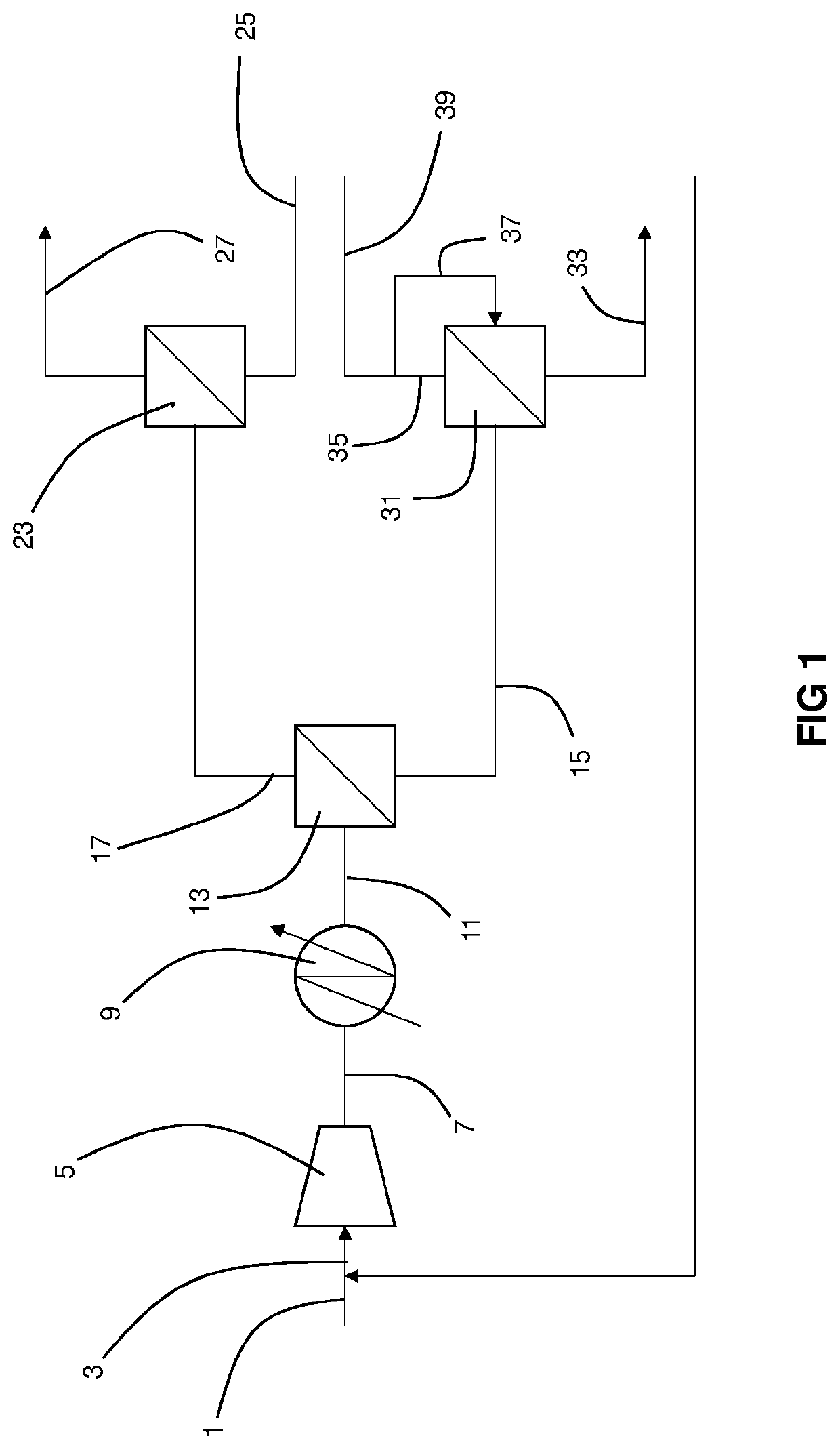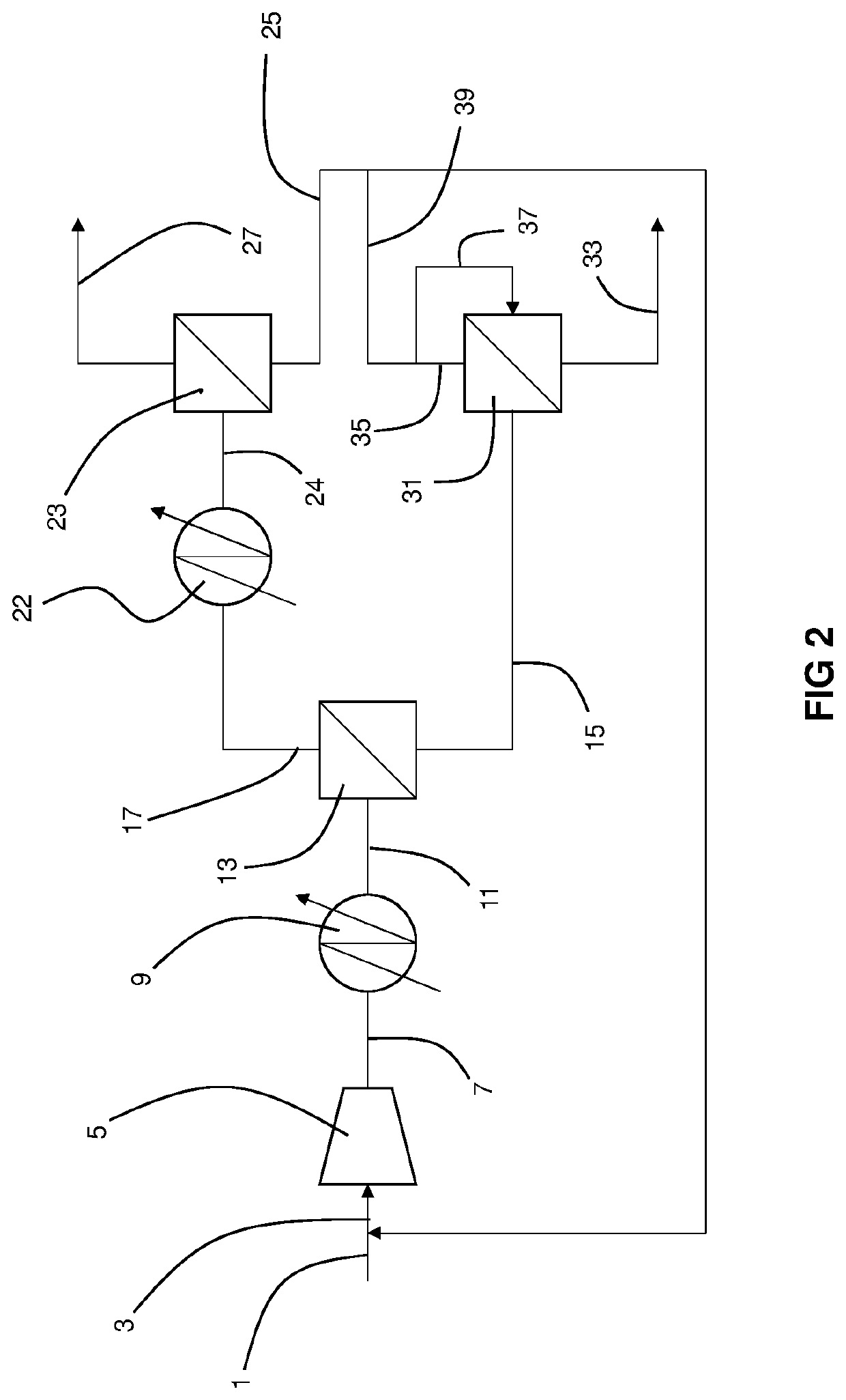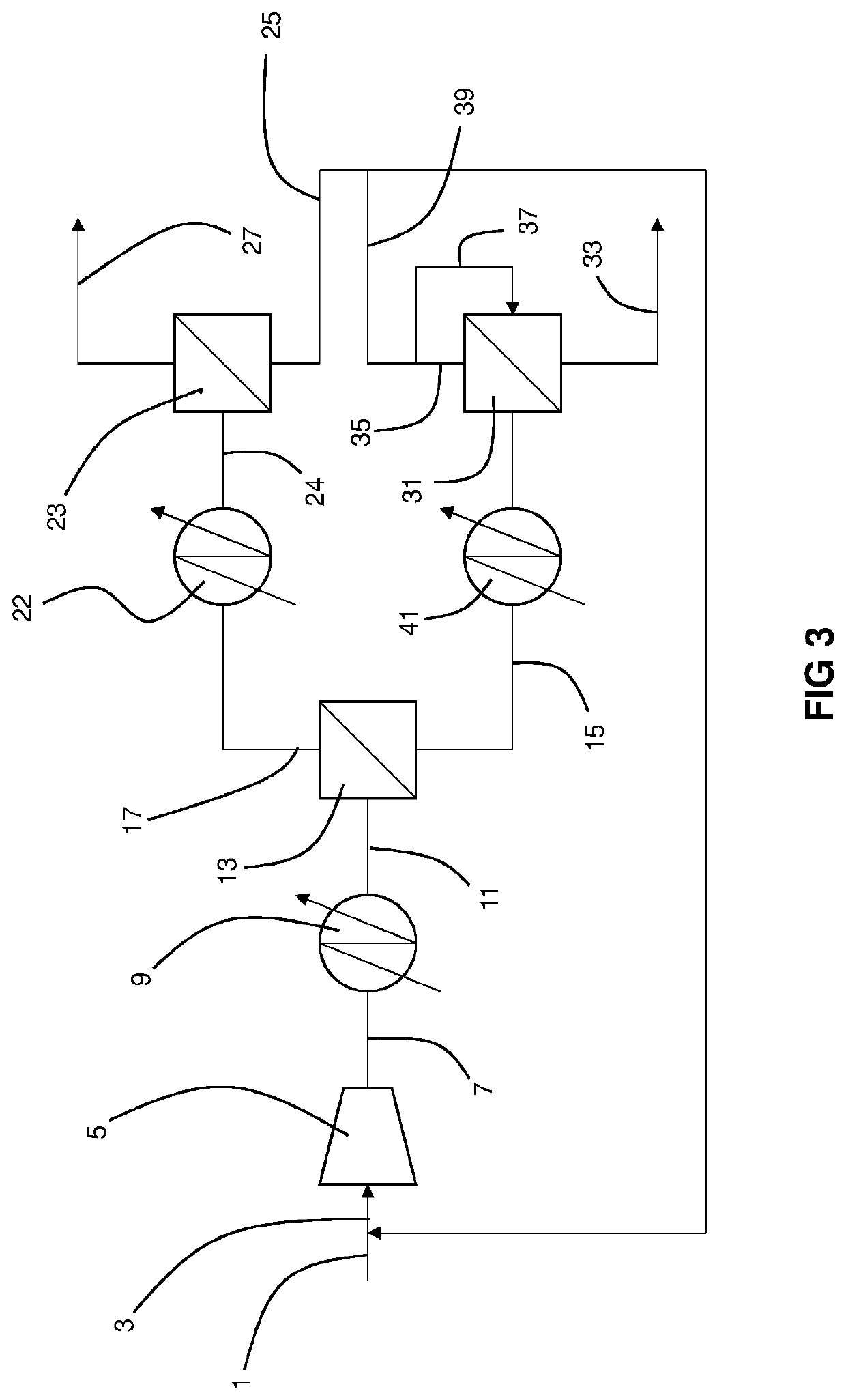Three stage membrane gas separation with cooling and use of sweep gas
a membrane gas and sweep gas technology, applied in the direction of membranes, separation processes, domestic cooling apparatus, etc., can solve the problems of undesirable membrane cooling, increased operating costs of such a system, and increased compression
- Summary
- Abstract
- Description
- Claims
- Application Information
AI Technical Summary
Benefits of technology
Problems solved by technology
Method used
Image
Examples
Embodiment Construction
[0046]Separation of a gas mixture comprising first and second gases may be improved using three stages of gas separation membrane modules that includes the additional techniques of cooling the feed gas stream that is fed to the first stage and using a portion of the third stage retentate as a sweep gas on the third stage. Cooling the feed gas stream results in a lowered operating temperature of the polymeric membrane of the first stage. This lowered operating temperature increases the selectivity of the membrane for the second gas over the first gas. The loss of flux (productivity) of the second gas that would be expected from the point of view of the state of the art is more than compensated for by sweeping the third gas separation module with a portion of the retentate from that module. Surprisingly, the synergistic effect of these two techniques exceeds what might be expected by the skilled artisan from the combination of the effects of cooling alone and sweep alone.
[0047]The fir...
PUM
| Property | Measurement | Unit |
|---|---|---|
| vol % | aaaaa | aaaaa |
| vol % | aaaaa | aaaaa |
| temperature | aaaaa | aaaaa |
Abstract
Description
Claims
Application Information
 Login to View More
Login to View More - R&D
- Intellectual Property
- Life Sciences
- Materials
- Tech Scout
- Unparalleled Data Quality
- Higher Quality Content
- 60% Fewer Hallucinations
Browse by: Latest US Patents, China's latest patents, Technical Efficacy Thesaurus, Application Domain, Technology Topic, Popular Technical Reports.
© 2025 PatSnap. All rights reserved.Legal|Privacy policy|Modern Slavery Act Transparency Statement|Sitemap|About US| Contact US: help@patsnap.com



